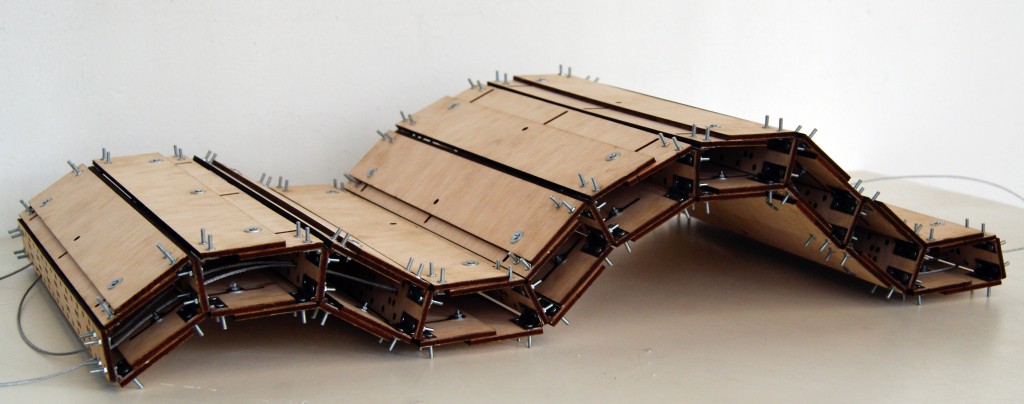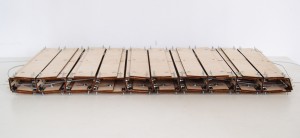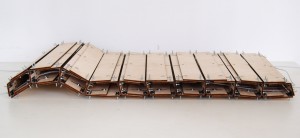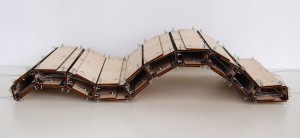Video : http://www.youtube.com/watch?v=RSa29WA6n3s&feature=youtu.be Read More
Models for arduino with Alex Posada
Prototyping workshop with Edouard Cabay
To develop a prototype with a performative behavior, was the target given for the workshop held by Edouard Cabay. We translated the work done during studio into a concise notion of a prototype to understand a module , or a simple aggregation of them in order to move forward with our projects.
The prototype built during the workshop consists on a surface, which target is to modify itself according to the usage and intensity of mobility happening on it, by responding to the pressure of the occupancy (weight) it deforms/reacts with and emerging landscape which can provide program along the surface, in those parts which lack usage.
Pyshically, it is composed of a grid-made-surface, which is glued to a lycra fabric, and since the grid is composed of individual modules, hexagons, in this case, they are able to stretch or come together as needed, underneath the surface a box holding an air mattress which gives the performative behavior, it is maintaining a constant air pressure for the surface which allows the action/reaction to the weight and pressure.
The vertical elements in each module are being used as “witnesses” of the changes in the performative topography, it can be obvious to the eye or extremely discrete, and this pointers help us understand how the deformation of the surface is happening, also, something interesting was discovered by their usage, and element quite similar to this could be introduced in terms of mobility, to bring a new visual language, boundaries, stratification and permeability into the surface.
Interesting things were discovered, specially how the air mechanism needs more research in order to determine and adequate system for it, something that can control the deformation aside from the pressure. It was very important exercise since we discovered hidden behaviors, restraints and possibilities, during this process.
Cruise Terminal-BCN 361 Prototype Workshop
 In this workshop with Edouard Cabay we have been working developing a structural strip made of parts able to morph into the different parts of an Arc (based on their structural properties, keystone and voussoir mainly) modifying the angle of each one. The entire structure will work in three main concepts, Morph (each strip piece), Strech (several pieces to create curves) and Push (entire structure).
In this workshop with Edouard Cabay we have been working developing a structural strip made of parts able to morph into the different parts of an Arc (based on their structural properties, keystone and voussoir mainly) modifying the angle of each one. The entire structure will work in three main concepts, Morph (each strip piece), Strech (several pieces to create curves) and Push (entire structure).
The prototype we built during the workshop its manually modified to achieve different arcs depending on the angle of each “keystones” that generates the strip. The next step is to connect a longer-improved surface to a force able to move it and be responsive to the different inputs (flows) through sensors connected to an arduino board and a database.
Hyperborder Port: Border Prototype
The aim of the workshop was the construction of a prototype of a single module from the proposal for the studio project: Hyperbordered Port. The important thing was the development of the unit referring to the entire system.
The prototype of the unit was developed in order to study the function of the hydraulic system in the module. The element used for the hydraulic system were the syringes. The syringes were connected such a way that the water pushed in one side was used to lift a surface besides.
The same hydraulic concept was used to build a system of the units. This piece shows the interaction of the modules
This exercise was helpful to understand the function of a unit in order to come back to the project with the same hydraulic concept.
















